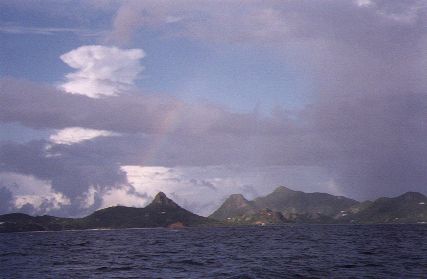
Union Island, note the rainbow.
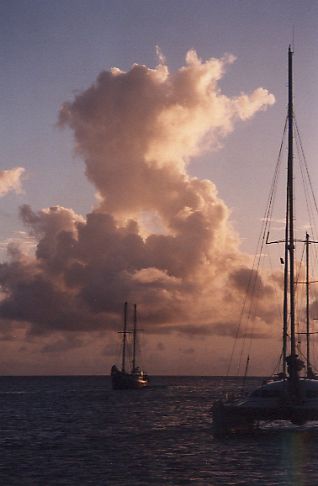
A beautiful sunset, we had many.
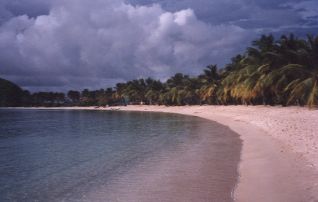
Salt Whistle Bay, a great place to relax. The food is mediocre.
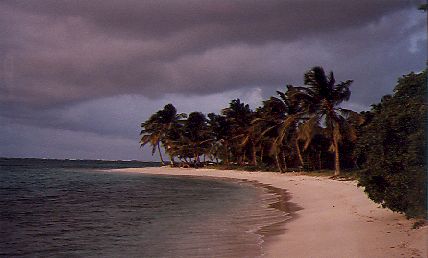
A beach on one of Tobago Cays. No food, no people.
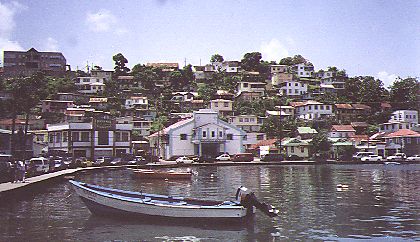
St. Georges on Grenada.
West Indies 2 |
|
From an old Cunard map:
St. Lucia - Discovered by Columbus for Spain in 1502, the island was first successfully settled by the French in 1650. It then proceeded to be exchanged between Great Britain and France a total of 14 times - a record even for the Lesser Antilles - but has been British since 1814. St. Lucia is an island of volcanoes, both old and new. The northern half of the island has the gentler contours of the old, eroded volcanoes while the southern half is the more rugged landscape of the younger, steeper ones - including the still-active Soufriere. St. Lucia is endowed with beautiful beaches and glorious mountain scenery. It is the site of one of the most outstanding landmarks in the Caribbean - the twin peaks of Gros Piton and Petit Piton. These spectacular spires rise straight from the sea on the leeward coast and have been used as landmarks by navigators for centuries.
| The islands, maan | |

Union Island, note the rainbow. |

A beautiful sunset, we had many. |

Salt Whistle Bay, a great place to relax. The food is mediocre. | |

A beach on one of Tobago Cays. No food, no people. |

St. Georges on Grenada. |
| Back to West Indies People |